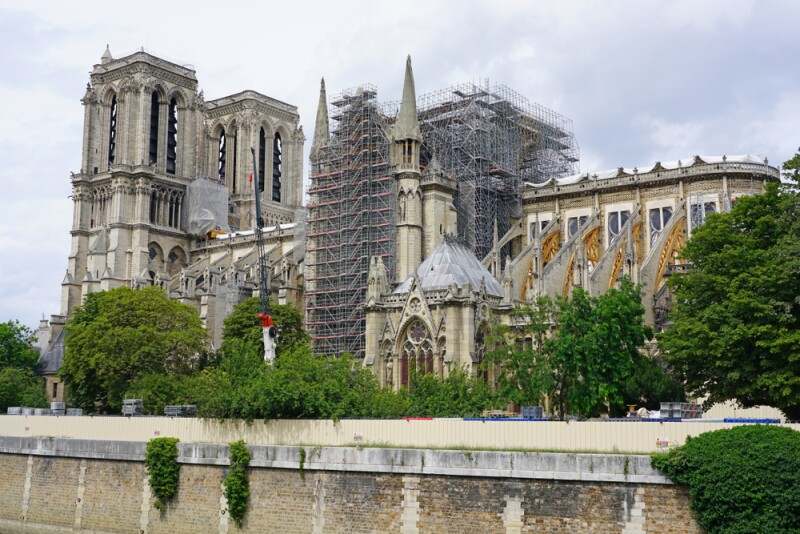For the average college student, an exciting day likely does not include biking around a rainy city in search of the birthplace of the Nobel- and Pulitzer prize–winning author Saul Bellow, with only old insurance maps as your guide. Unless you’re Richard Kreitner, that is, who did just that while attending university in Montreal. Kreitner’s passion for reading began early in high school, when he devoured the works of such writers as Kurt Vonnegut, Thomas Hardy, Marcel Proust, and Bellow. So it should come as no surprise that years later, the Brooklyn-based writer—who also created an epic American road-trip map plotting routes from 12 nonfiction books, including Kerouac’s On the Road and Twain’s Roughing It—would be tapped to pen the recently released Booked: A Traveler’s Guide to Literary Locations Around the World. (The offer to write the book arrived on his honeymoon in Crete, where he and his wife were tracking down the birthplace of the Greek author George Psychoundakis.)

In Booked, find maps, photos, and itineraries for book-centric destinations across the globe.
Image courtesy of the publisher
The 226-page tome is a gold mine for anyone who loves books and traveling in equal measure. It features a diverse collection of classics (Gone With the Wind, Don Quixote, It, The Catcher in the Rye, Crime and Punishment), poetry (by Henry David Thoreau and Emily Dickinson), and nonfiction (In Cold Blood, Into the Wild)—each one tied to a specific landmark or destination. There are also sections dedicated to especially literary cities like Brooklyn, London, and New Orleans. And every continent except Antarctica is represented. “I knew from the beginning that the book would be incomplete, so that gave me the freedom to include things from left field and not stress about leaving things out,” Kreitner says. “I tried to have a high-low mix, so there’s Shakespeare and then there’s Twilight.”
The book will appeal to anyone who has read a novel and wondered about the real-life locale that inspired it. “For me, there’s a natural inclination to see how the author treated a place and turned it into art—and to ask yourself if you would have done it the same way,” Kreitner says. “There’s something magical in that process that really attracts me and many readers.” In reading Booked, you’re also likely to discover something you’ve never read and learn about where it was set—all the inspiration you need to plan a trip. Here are five of Kreitner’s favorite literary destinations.

A July photo shows scaffoldings on Notre-Dame de Paris after fire damaged the cathedral in April 2019.
Photo by EQRoy/Shutterstock
Notre-Dame Cathedral, Paris
“When Notre-Dame caught fire in April, it was striking to me how present the 19th-century author Victor Hugo and The Hunchback of Notre-Dame were in the conversations. It was such a testament to the importance of how literature can affect a place. Sales of the book soared after the fire, and it seemed like people were living their grief through the novel.”

A New York City waterway ferry passes under the Brooklyn Bridge.
Photo by Michelangelo DeSantis/Shutterstock
Brooklyn Ferry, Brooklyn
“Walt Whitman wrote the poem ‘Crossing Brooklyn Ferry’ about riding from Manhattan to Brooklyn and back again. In it, he reaches through time to touch his readers years in the future—saying that people will still be doing this and water will still be churning. About 20 years after writing the poem, in 1883, the ferry shut down because the Brooklyn Bridge opened. The ferry service has since reopened, and today, you can have that exact experience he had, which I think is pretty cool.”
Alice Munro Literary Garden, Wingham, Ontario
“This is an example of a contested literary legacy in which the author is still alive. Munro’s stories about the town where she grew up are not entirely positive—she wrote about things like incest and adultery—and her work is so unpopular there that she requested a police escort for the opening of the garden. I think that’s interesting because it demonstrates the potency of literature either to inspire or infuriate.”

New Bedford was settled in 1652; both Frederick Douglass and Herman Melville spent time there.
Photo by Dan Logan/Shutterstock
New Bedford, Massachusetts
“My wife was reading Narrative of the Life of Frederick Douglass in grad school at the same time as I was reading Herman Melville’s Moby Dick. They both feature New Bedford, which at the time in the early 1840s was a bustling, diverse whaling port that welcomed sailors from all over the world. That also made it a convenient spot to hide out if you were a fugitive slave—it was an important stop on the Underground Railroad—and Douglass got his first taste of freedom there. Melville was also there trying to get away. I was interested to see if they ever crossed paths. It looks like they were there at the same time, but there’s no record that they met.”
The Museum of Innocence, Istanbul
“This book [The Museum of Innocence] by the Turkish writer Orhan Pamuk, came out in 2008 and is the story of a middle-aged man who has a decades-long, obsessive love affair with a married distant relative that only ends when she dies. The whole time, he collects things like cups she drinks from and cigarette butts she uses, and at the end of the book he decides to make a museum devoted to her with the items he collected. Pamuk actually went and built that museum, and you can go and see these objects. It’s an interesting interplay between reality and fiction—one you can appreciate without reading the book.”
>>Next: A Literary Trip to Lisbon Is the Best Way to Uncover Portugal’s Hidden Beauty











